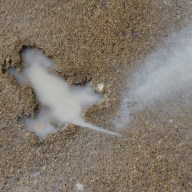The ‘Frankenfish’ one example of ecosystem chaos
“Many species are introduced to new habitats each year, and some will devastate their new ecosystems.”
Imagine this for next summer’s blockbuster movie season.
A large, bizarre fish ravages its pond, killing all the other fish, frogs, small mammals, and a bird or two. The fish zealously protects its young, killing anything it perceives as a threat, including an occasional swimmer.
When a panicked public tries to stop the fish by poisoning the pond, it does not work, since the spawn of this fish have already crawled to other ponds.
Okay, so maybe it’s no Anaconda (or even Anaconda II), but certainly more compelling than the Alligator in the Sewer urban myth.
Actually, much more compelling, because it’s real.
We’re talking, of course, about the snakehead fish, of which there are 28 known species from Asia. They are voracious predators and some larger species have been known to attack people (however rare).
Brought to North America as delicacies and as exotic pets, they have shown up in a number of lakes and ponds where they have wreaked havoc.
Several years ago, these “Frankenfish” were found in a small Maryland pond. By the time the pond was poisoned, it was too late. These species are capable of air-breathing for a short period of time, and can crawl from pond to pond (an adaptation to drought).
Interesting, perhaps, but why are we talking about them here? Because these fish are invasive species.
They are a striking example of the risks of introducing species into new habitats, where they have no natural predators or competitors, and where prey species have no defences.
Most invasive species will never gain the notoriety or inspire the fear and awe of “Frankenfish.” However, many species are introduced to new habitats each year, and some will devastate their new ecosystems.
In the Great Lakes, accidental introductions due to ship traffic total more than 140 invasive species. These include sea lampreys, which devastated trout fisheries during the last century.
Other species of note have included the zebra mussel, spiny water fleas, rusty crayfish, carp, and gobies. Lack of natural predators and their particular life history strategies have allowed these species to become abundant, out-compete native species, and alter the structure of food webs in the lakes.
Invaders also include plants. The CBC Radio program “Sounds Like Canada” is currently running a feature in search of “Canada’s worst weed.”
Many of the weeds nominated are invasive and out-compete native species for the same reasons mentioned for successful animal invaders.
The costs of invasive species to Canada, in terms of control measures, environmental damage, and economic loss, are not well quantified. However, a 1999 study from scientists at Cornell University estimated the cost of invasive species to the U.S. economy at $138 billion per year, so we know the costs to the Canadian economy are high.
While invasive species can be introduced accidentally, many are deliberately introduced, often by well-intentioned people.
Someone may grow tired of an exotic pet and choose to set it free. A gardener may see a beautiful, non-native plant and want it for her garden.
Many small decisions like this, made every day, contribute to the spread of invasive species. Remember, many small decisions can also help curb the spread.
Andrew Laursen is an assistant professor in the department of chemistry and biology at Ryerson University and is a member of the environmental applied science and management program in graduate studies. His research is in the area of ecosystem ecology. Sophia Dore is an environmental scientist with Conestoga-Rovers & Associates, an environmental consulting company. Contact Andrew Laursen at earthtones.metro@gmail.com
















